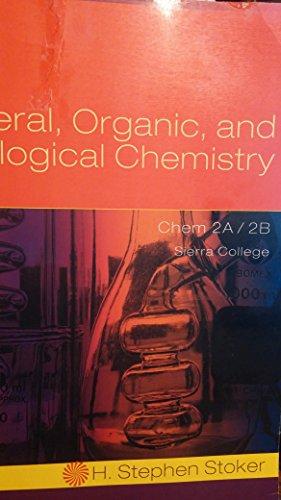
Concept explainers
Interpretation:
The five possible constitutional isomers of hydrocarbon with the molecular formula of
Concept Introduction:
Organic compounds are represented shortly by the molecular formula and structural formula. Each and every compound has its own molecular formula. Compounds can have same molecular formula but not same structural formula.
Isomers are the compounds that have same molecular formula but different structural formula. The main difference lies in the way the atoms are arranged in the structure. Isomers have different chemical and physical properties even when they have same molecular formula. This is known as Isomerism.
If there is difference only in the connectivity of the atoms in the molecule, then it is known as constitutional isomerism. The isomers are known as constitutional isomers. They will have same molecular formula and same
In case of
Skeletal isomers are a type of constitutional isomers which have different carbon‑atom arrangement and have the same functional group in them.
Positional isomers are a type of constitutional isomers which have same carbon‑atom arrangement and have difference in location of functional group in them.
Want to see the full answer?
Check out a sample textbook solution
Chapter 13 Solutions
General, Organic, And Biological Chemistry
- Classify each of the following hydrocarbons as alkanes, alkenes, or alkynes. (a) C12H24 (b) C7H12 (c) C13H28arrow_forwardSummarize the nomenclature rules for alkanes, alkenes, alkynes, and aromatic compounds. Correct the following false statements regarding nomenclature of hydrocarbons. a. The root name for a hydrocarbon is based on the shortest continuous chain of carbon atoms. b. The suffix used to name all hydrocarbons is -ane. c. Substituent groups are numbered so as to give the largest numbers possible. d. No number is required to indicate the positions of double or triple bonds in alkenes and alkynes. e. Substituent groups get the lowest number possible in alkenes and alkynes. f. The ortho- term in aromatic hydrocarbons indicates the presence of two substituent groups bonded to carbon- 1 and carbon-3 in benzene.arrow_forwardDistinguish between isomerism and resonance. Distinguish between structural and geometric isomerism. When writing the various structural isomers, the most difficult task is identifying which are different isomers and which are identical to a previously written structurethat is, which are compounds that differ only by the rotation of a carbon single bond. How do you distinguish between structural isomers and those that are identical? Alkenes and cycloalkanes are structural isomers of each other. Give an example of each using C4H8. Another common feature of alkenes and cycloalkanes is that both have restricted rotation about one or more bonds in the compound, so both can exhibit cis- trans isomerism. What is required for an alkene or cycloalkane to exhibit cis-trans isomerism? Explain the difference between cis and trans isomers. Alcohols and ethers are structural isomers of each other, as are aldehydes and ketones. Give an example of each to illustrate. Which functional group in Table 21-4 can be structural isomers of carboxylic acids? What is optical isomerism? What do you look for to determine whether an organic compound exhibits optical isomerism? 1-Bromo-1-chloroethane is optically active whereas 1-bromo-2-chloroethane is not optically active. Explain.arrow_forward
- Complete and balance the following combustion reactions. Assume that each hydrocarbon is converted completely to carbon dioxide and water. (a) Propane + O2 (b) Octane + O2 (c) Cyclohexane + O2 (d) 2-Methylpentane + O2arrow_forwardDescribe structural isomerism and the different types that exist. With the aid of diagrams use the molecular formulae C5H12 and C5H10 to explain structural isomerism in aliphatic alkanes and alkenesarrow_forwardWhat are the 4 structural isomers of C4H9Clarrow_forward
- What are cycloalkanes?arrow_forwardDraw and name the five cycloalkane structures of formula C5H10. Can any of these structures give rise to geometric (cis-trans) isomerism? If so, show the cis and trans stereoisomersarrow_forward+ Complete the table Molecular Formula Structural Formula Condensed Formula Skeletal Formula Types of Hydrocarbon (Alkane, Alkene, Alkyne) CH;CH;CHCHCH3 CH;CH=CHCH3 CH6 Note: General Formula of Alkane (C,H2n-2), Alkene (C,H2), Alkyne (C,H2n-2). Where n is the number of C atom in the formula. Alkane (C-C), Alkene (C=C) and Alkyne (C=C)arrow_forward
- Write the structures for all the isomers of the –C5H11 alkyl group.arrow_forwardWrite condensed structural formulas, and skeletal structures for each structural isomer of C4H10.arrow_forwardWhich among the following statements is FALSE about alkanes and cycloalkanes? Choices:All alkanes produce CO2 and water vapour upon complete combustion.Cyclic alkanes exhibit bond strain in the sp3-sp3 sigma bonds.Alkanes undergo substitution reactions.The empirical formula of all alkanes is CnH2n+2arrow_forward
 Organic And Biological ChemistryChemistryISBN:9781305081079Author:STOKER, H. Stephen (howard Stephen)Publisher:Cengage Learning,
Organic And Biological ChemistryChemistryISBN:9781305081079Author:STOKER, H. Stephen (howard Stephen)Publisher:Cengage Learning, General, Organic, and Biological ChemistryChemistryISBN:9781285853918Author:H. Stephen StokerPublisher:Cengage Learning
General, Organic, and Biological ChemistryChemistryISBN:9781285853918Author:H. Stephen StokerPublisher:Cengage Learning Chemistry for Today: General, Organic, and Bioche...ChemistryISBN:9781305960060Author:Spencer L. Seager, Michael R. Slabaugh, Maren S. HansenPublisher:Cengage Learning
Chemistry for Today: General, Organic, and Bioche...ChemistryISBN:9781305960060Author:Spencer L. Seager, Michael R. Slabaugh, Maren S. HansenPublisher:Cengage Learning Chemistry: The Molecular ScienceChemistryISBN:9781285199047Author:John W. Moore, Conrad L. StanitskiPublisher:Cengage Learning
Chemistry: The Molecular ScienceChemistryISBN:9781285199047Author:John W. Moore, Conrad L. StanitskiPublisher:Cengage Learning Introductory Chemistry: A FoundationChemistryISBN:9781337399425Author:Steven S. Zumdahl, Donald J. DeCostePublisher:Cengage Learning
Introductory Chemistry: A FoundationChemistryISBN:9781337399425Author:Steven S. Zumdahl, Donald J. DeCostePublisher:Cengage Learning





